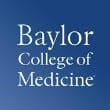Program Overview
The rise of antibiotic-resistant microorganisms globally is now considered one of the most critical public health threats of the 21st century. The call for action against the threat of antibiotic resistance has now reached the highest levels of government and health care. For example, the Office of the President of the United States has convened the Presidential Advisory Council on Combating Antibiotic-Resistant Bacteria, and the World Health Organization has issued its Global Action Plan on Antimicrobial Resistance with support from the United Nations. Thus, detecting, preventing, and controlling antibiotic resistance is now more urgent than ever and requires a strategic, coordinated, and sustained effort. There remain inconsistencies among various clinical settings regarding the correct approach to diagnose and treat infections caused by resistant microorganisms because of limited knowledge concerning the mechanisms of resistance and also because of limited treatment options. Similarly, there are several overlapping and confusing strategies to prevent the spread of these organisms to other patients in the clinical setting. Lacking robust clinical data, physicians (including infectious diseases specialists) have to rely on data from in vitro and possibly animal studies to make treatment decisions. This logic is valid only when the mechanisms of antibiotic resistance and their clinical impact are fully understood.
Target Audience
Practicing Physicians, Infectious Disease Specialists, Other Healthcare Professionals, Fellows, Residents, and Medical Students
Educational Objectives
At the conclusion of the activity, participants should be able to:
• Summarize the major mechanisms of antibiotic resistance present in hospitals-associated pathogens and apply strategies to combat resistance in clinical settings
• Identify new and emerging technologies developed for the diagnosis of antimicrobial resistance and drug discovery
• List novel mechanism-based platforms for antibiotic development against MDR organisms
• Summarize the clinical use and applications of new drugs developed against the most resistant bacterial and fungal organisms, and incorporate them into clinical practice
• Identify the role of the microbiome in colonization resistance against infection by antimicrobial-resistant pathogens, and the molecular mechanisms underlying this process
• Summarize the rationale for using the microbiome as a diagnostic and therapeutic tool against MDR organisms
• Implement interventions that target microbiome dynamics and improve patient outcomes including in-hospital mortality
• Define current approaches to antibiotic stewardship locally, statewide, nationally and globally
• Implement the key strategies of antibiotic stewardship in specific clinical settings
• Explain the role of behavior in optimizing antimicrobial stewardship strategies and incorporate behavioral approaches into global stewardship programs
• Apply best practices for evaluating success of stewardship programs
• Summarize emergent trends on resistance to common antiviral and antifungal agents (except HIV), and identify and incorporate interventions to optimize therapy and prevent emergence of resistance
Educational Methods
Lecture, Symposium, Case Study, Panel Discussion, and Case Study
Evaluation
Evaluation by questionnaire will address program content, presentation, and possible bias.
Accreditation/Credit Designation
This activity has been planned and implemented in accordance with the accreditation requirements and policies of the Accreditation Council for Continuing Medical Education (ACCME) through the joint providership of Baylor College of Medicine and Gulf Coast Consortia for Quantitative Biomedical Sciences. Baylor College of Medicine is accredited by the ACCME to provide continuing medical education for physicians.
Baylor College of Medicine designates this live activity for a maximum of 19.75 AMA PRA Category 1 Credits™. Physicians should claim only the credit commensurate with the extent of their participation in the activity.
